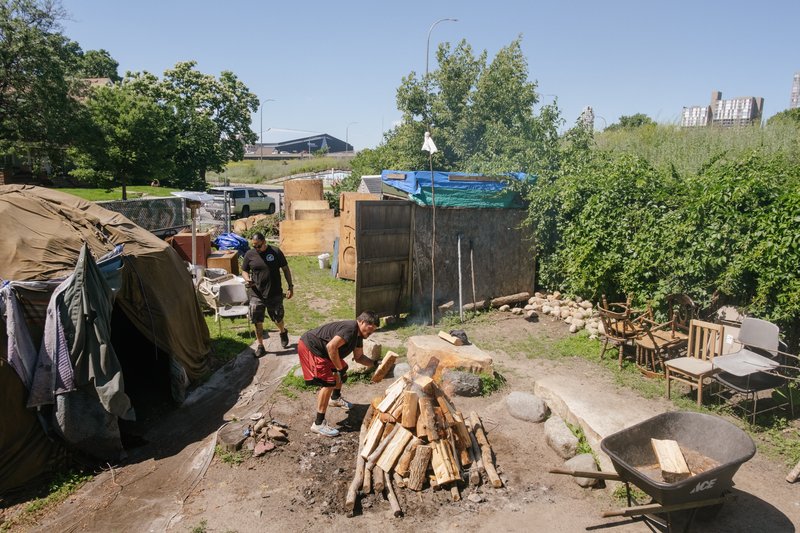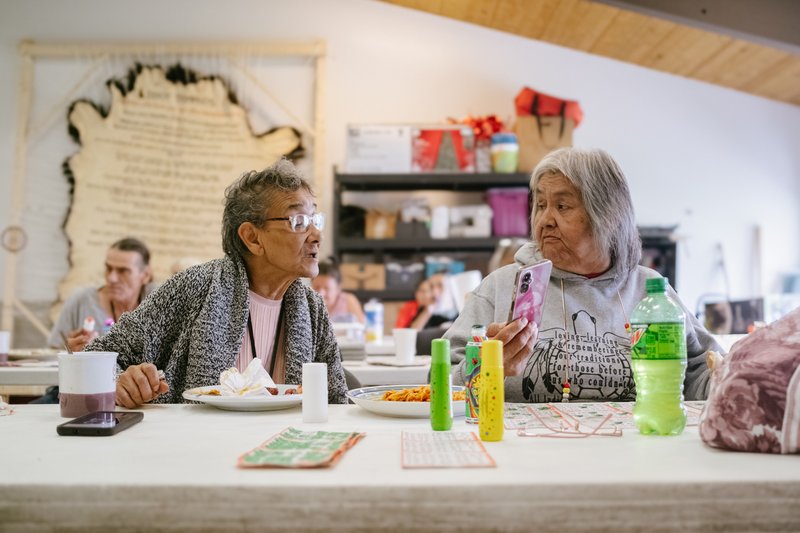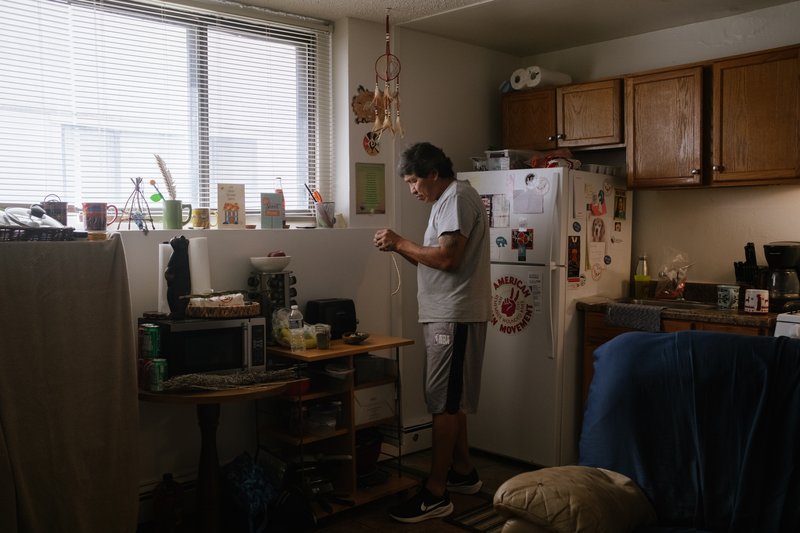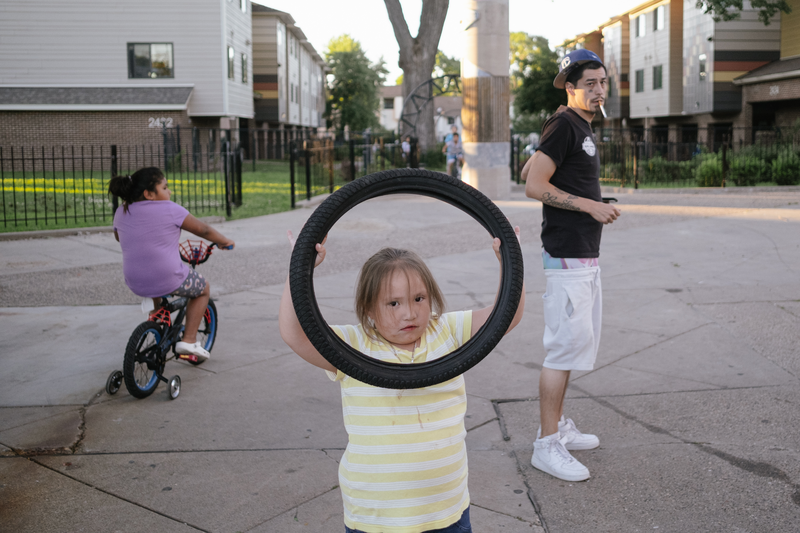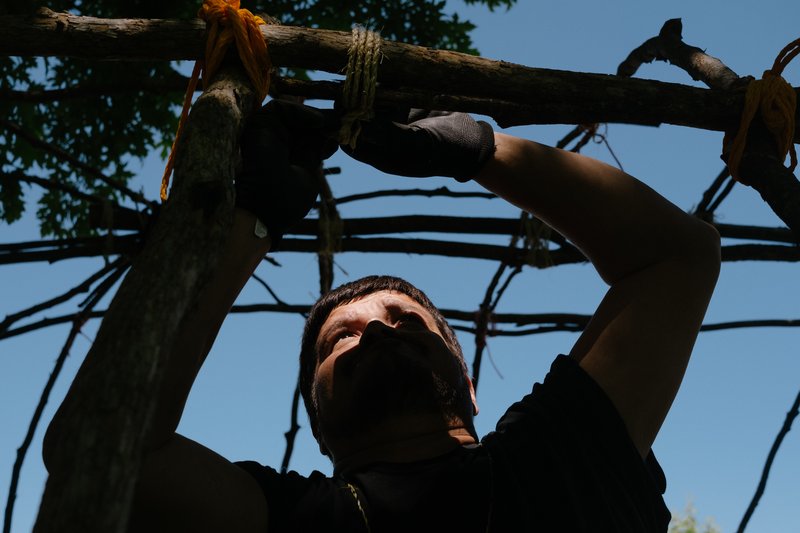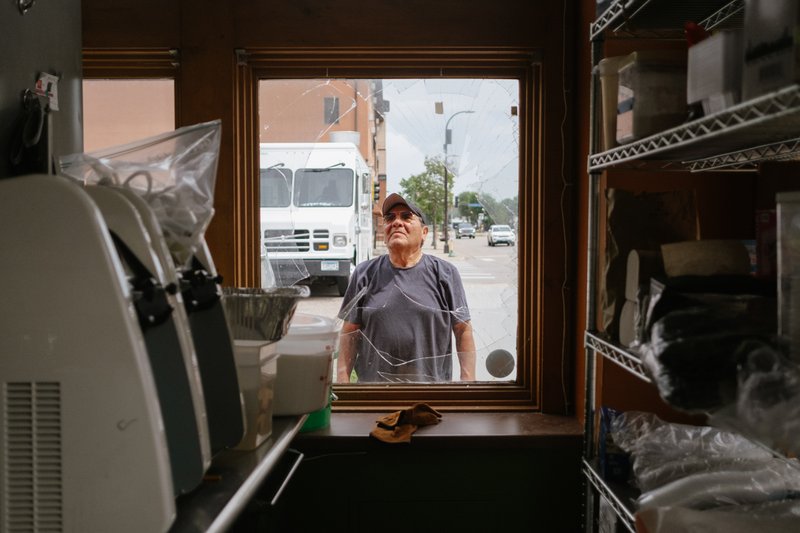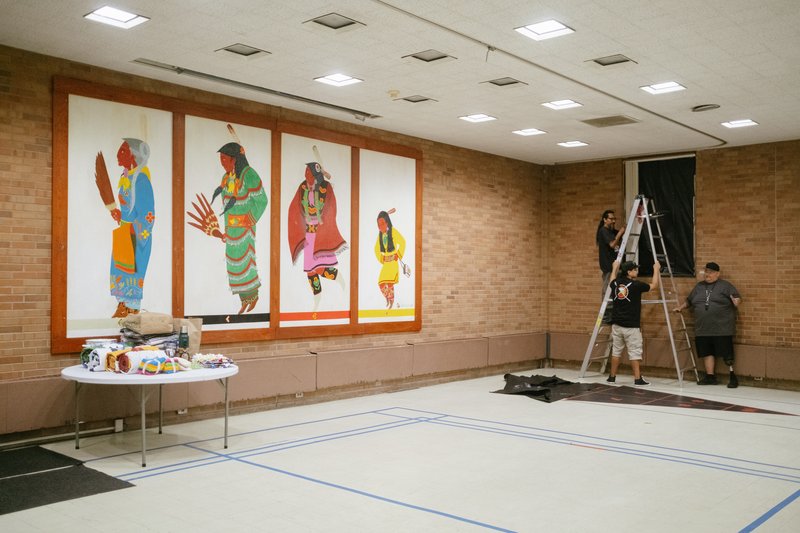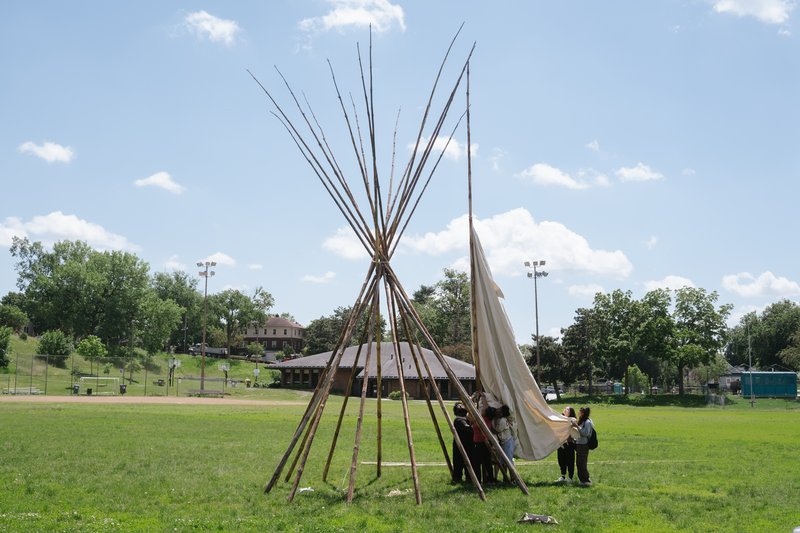Award of Excellence: More than Frybread
Prepping the Sweat Lodge
Osha “Willie” Wisko Miigwaan builds a fire to heat up stones for the evening’s sweat lodge behind the Anishinabe Wakiagun (The People’s Home) Housing Complex several blocks south of downtown Minneapolis, M.N., in the American Indian Cultural Corridor on June 13, 2024. In order for the stones to be used in ceremony, they must be completely covered by wood as they heat up. In the 19th century, Native Americans created frybread from the limited rations provided by the US government, a dish that became a symbol of survival during persecution. Today, Natives living in Little Earth of United Tribes—the nation’s only Native-preference, low-income housing community—in the American Native Cultural Corridor in southern Minneapolis continue to feel the lasting impacts of oppression. Over 100 miles from the nearest reservation and representing over 30 different tribes, the neighborhood has become a microcosm of the obstacles that face the Indigenous community. However, just as frybread evolved into a testament to survival, Little Earth embodies a shift from merely surviving to reclaiming a fuller life. It stands as a testament to the resilience of Native peoples, who, decades after having their identities stripped away, are actively reclaiming their cultural heritage and working to restore their past.
Jordan Tovin
